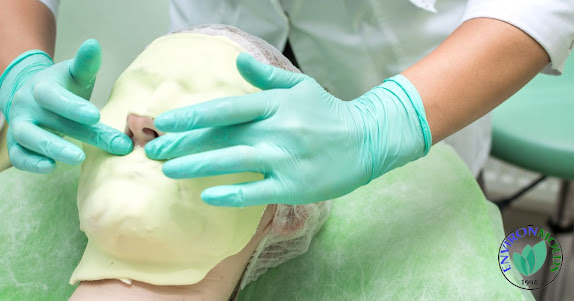In the world of sculpture and life casting, alginate has established itself as a preferred material for creating highly detailed and safe body impressions. Known for its precision and skin-safe properties, alginate is widely used in art studios, educational institutions, and special effects workshops. Whether used for full hand replicas or facial impressions, this flexible material makes crafting artistic alginate molds more efficient and remarkably accurate.
The Artistic Potential of Alginate
Alginate is a naturally derived substance extracted from brown seaweed. Its unique ability to capture fine details while remaining gentle on skin makes it ideal for body casting and life sculpture. Whether you’re a fine artist creating a lifelike bust or an educator demonstrating molding techniques, alginate provides a reliable solution.
This blog explores how alginate sculpture has revolutionized modern art practices, what makes it different from other mold-making materials, and how to use it effectively for safe, professional-grade results.
What Makes Alginate Ideal for Artistic Molding?
Alginate is preferred in artistic applications due to its non-toxic, fast-setting, and skin-safe nature. Unlike synthetic mold materials, alginate is biodegradable and doesn’t require high-temperature curing.
When mixed with water, alginate forms a thick, creamy paste that sets quickly, capturing every fingerprint and skin texture within minutes. This makes it perfect for body casting alginate applications where accuracy and comfort are essential.
In addition, alginate is free from harmful chemicals like latex or silicone additives, making it suitable for sensitive skin and safe for use with children or older individuals in art workshops.
How Artists Use Alginate for Sculptures
Creating a lifelike impression begins with applying artistic alginate molds directly to the skin. Artists typically use it to mold hands, feet, faces, or other body parts that require high fidelity. Once the alginate sets, a rigid backing (usually plaster bandages) is applied to support the mold. The result is a negative impression that can be filled with casting material like plaster, resin, or wax to produce the final sculpture.
Alginate sculpture is widely used in:
- Portrait sculpture
- Theatrical and prosthetic mold-making
- Educational body anatomy models
- Commemorative keepsakes and memorial art
Its flexibility and safety have made it the go-to choice for both beginner artists and seasoned professionals.
Selecting the Right Type of Alginate
Different types of alginates are available depending on the required setting time, viscosity, and application. Fast-set alginates cure in under 3 minutes, ideal for small, quick impressions like fingers or hands. Slower-setting options give artists more time for larger applications such as full-face or torso molds.
Factors to consider include:
- Set Time: Choose between fast, regular, or slow set depending on your experience level and size of the project.
- Mix Ratio: Follow precise water-to-alginate ratios for consistent results.
- Skin Sensitivity:Choose high-quality, professional-grade body casting alginate that is specifically designed to be safe for use on the skin.
At ArtMolds, you'll find a wide range of premium alginate formulas tailored for different artistic and professional uses.
Important Tips for Successful Alginate Casting
Working with alginate is a time-sensitive process, so preparation is key. Here are a few essential tips to achieve optimal results:
- Always measure accurately. Use the recommended water-to-powder ratio for smooth consistency.
- Use lukewarm water to adjust setting time—warmer water speeds it up, while colder water delays it.
- Mix thoroughly but gently to avoid bubbles in the mold.
- Apply petroleum jelly or mold-release cream on areas with hair to prevent discomfort during removal.
- Pour casting material into the mold as soon as possible, as alginate begins to degrade after several hours.
Following these best practices ensures that your alginate sculpture will retain maximum detail and structural integrity.
Sustainability and Storage Considerations
Although artistic alginate molds are not permanent, they offer excellent temporary impressions for single-use casting. The biodegradable nature of alginate makes it an environmentally responsible choice for artists who value sustainability.
Once cured and used, alginate molds should be discarded, as they are not reusable. To extend their usability window, store mixed alginate in a cool, humid environment and avoid exposing it to direct sunlight or heat.
Conclusion: Bring Your Vision to Life with ArtMolds
From life casting to theatrical design, alginate empowers artists to create with precision, safety, and sustainability in mind. Whether you are sculpting a custom portrait, making a one-of-a-kind keepsake, or conducting a classroom demonstration, alginate sculpture offers both creative freedom and professional reliability.
At ArtMolds, we provide industry-leading body casting alginate, tools, and training resources to help you mold your ideas into reality.











